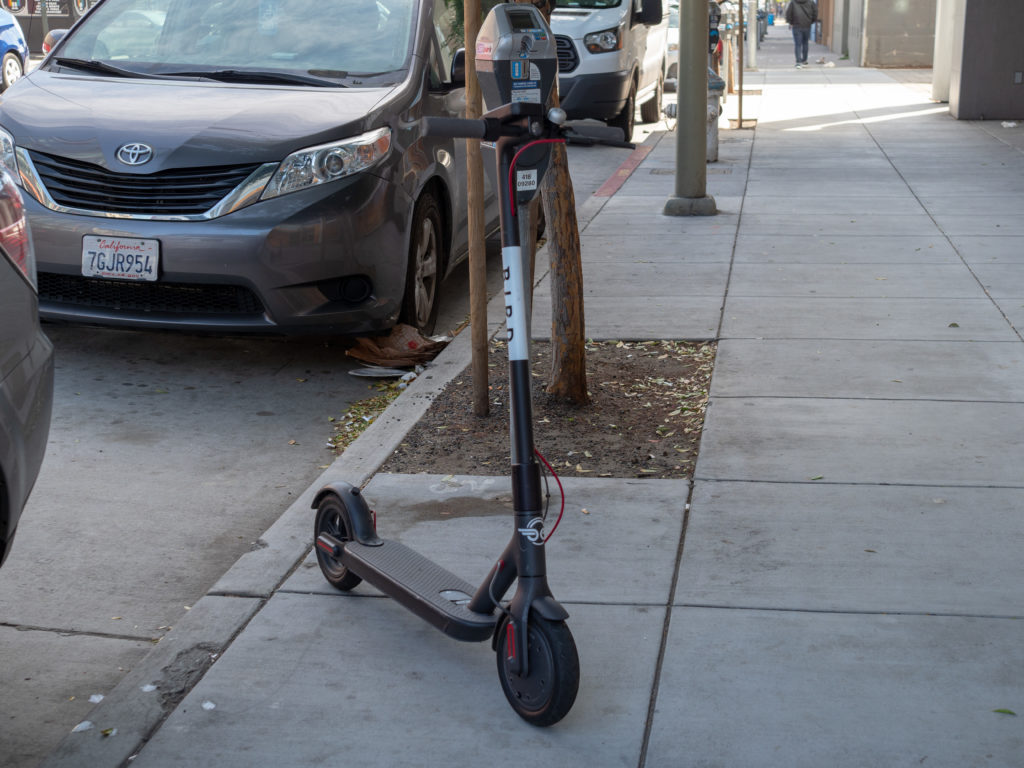Author Archives: NAIDominion
‘Scott’s Addition 2.0’: Henrico Zeros in on Westwood Avenue corridor
5 Reasons to View Flexible Space as an Amenity to Attract Tenants
WeWork started the concept but it has only grown and expanded from there. The co-working or flex space model which began in NYC is fast becoming the new Uber of commercial office space. With large corporations abandoning the traditional work model for more flex space, it is changing how landlords attract and retain tenants.
Recently, landlords are discovering that they can use their building’s flex space as an amenity to attract tenants. Flex space isn’t just a coworking hub: it is bookable meeting space, conference rooms, event space, and multimedia rooms. Tenants are also demanding more from flex space operators. Here are 5 reasons why landlords should view flexible space as an amenity for their tenants.
#1: Great Way to Increase Foot Traffic
WeWork bought the Lord & Taylor site on 5th Avenue in NYC recently. The goal is to target retailers and combine the two in order to increase foot traffic to both. Other co-working firms are catching the wave and looking to broaden their tenant mix from simple office space to office plus. The ICSC (International Council of Shopping Centers) reports that co-working spaces will increase from 600 locations in 2010 to over 26K by 2020.
#2: Best Option for the Growing Independent Workforce
An NPR/Marist Poll reported at the beginning of this year that currently, 20% of the workforce is made up of contract workers. That number is expected to increase to 50% of the workforce over the next 10 years. Flexible space is the ideal solution for independent workers who may need workspace on a short term or temporary basis.
#3: Perfect Way to Use Up Unused Space
Most businesses aren’t looking to expand their office footprints, but flex space operators are, thereby keeping large office space in high demand. Flex space operators are targeting large shopping centers and corporate offices with a thousand or more employees to fill their empty office spaces with a diverse new mix of tenants. Large office parks and skyrises with plenty of vacant office space can mix in dozens of different businesses that can provide great amenities to the building’s tenants.
#4: Excellent Way to Provide Tenants More Flexibility
In the convenience economy, flexibility is the word. Office tenants have turned office spaces into a “pay-as-you-go” service. This flexibility allows entrepreneurs and startups to get their businesses off the ground without huge upfront investments and it allows landlords to keep the space occupied constantly
Companies with their own office spaces are starting a new trend turning flex space into off-site meeting space. Breather, a similar model to WeWork except they provide very short term office spaces that rent on average for a day or two, provide flex space to companies to hold off-site conferences, meetings, and brainstorming sessions.
#5: Brilliant Way to Foster and Increase Collaboration
Along with the changes in workspace models is the change in work styles. Everything from office design to amenities is made to increase and foster collaboration among co-workers and among other tenants. According to one global study, over 60% of co-working tenants report an increase in focus and quality, while more than 90% reported that flexible workspace has aided business growth.
Mayor’s proposal would give wings to dockless scooters
How Will Rental Transportation Impact Our Cities?
You’re not just seeing things – rental transportation is becoming ever more of a popular thing by the day, particularly in larger metropolitan areas. Just as much as they are getting big, they’re also becoming controversial, with some cities fighting back with claims that these scooters clutter the community and are not tightly regulated enough. They’re everywhere, officials say. They’re convenient, claim the companies, in places where parking is a bear and even public transport can be challenging.
So where to from here? How will the advent of rental transportation impact our cities going forward?

SAN FRANCISCO, CA – APRIL 22, 2018: Bird, transportation start up, electric scouter parked on sidewalk
Venture Capital on Wheels
Last month, scooter startup Bird roped in some cash to the tune of $300 million. That didn’t just fall like a winged creature from the sky, by the way. It was provided as venture funding in a round led by Sequoia Capital. Sequoia’s Roelof Botha joined Bird’s board of directors as part of the transaction, which represents Bird’s second round of funding over the last few months. As a result, its $1 billion in May skyrocketed to a $2 billion valuation by the end of June. Compare that to a $300 million valuation in Mardch, and you might be getting a good idea of how hot the scooter business is these days.
Investors in this newest round include Accel, B Capital, CRV, and Sound Ventures, along with previous investors Craft Ventures, Index Ventures, and Valor. That basically represents everyone else who isn’t funding Bird’s competitor Lime, according to TechCrunch.
Scooter mania is afoot in Silicon Valley and the hearts investors in general — including Paige Craig, who has joined Bird as its vice president of business, Fortune reports. “These sorts of revolving-door fundraising processes are not entirely uncommon, especially for very hot areas of investment, though the scooter scene has exploded considerably faster than most,” the publication writes. “Bird’s round comes amid reports of a mega-round for Lime … with the company reportedly raising another $250 million … and (another competitor) Skip also raising $25 million.”
Great for the economy and the environment, yes? Possibly, but there is a flip side.
Nails in the Tires
These companies may find a less cooperative environment when it comes to civic leaders than it does within the venture-capital community. TechCrunch writes: “In San Francisco, though just a small slice of the United States metropolitan area population, the company is facing significant pushback from the local government, and scooters for the time being have been kicked off the sidewalks.”
There are a few reasons for that: first off, there have been quibbles as to how well regulated these scooters are within cities themselves, in addition to who exactly is responsible for storing and maintaining them so that they don’t pose a nuisance or even a threat to safety if abandoned in inconvenient or inappropriate areas.
However, with scooters poised to hit other cities and even Canada in the coming months, this debate is far from over … and it’s anyone’s guess who will emerge the victor.
Fitness center franchise stretches to Chesterfield
4 Things to Look for When Hiring a Commercial Brokerage
Starting the business was the hard part. Now you are looking for a space but how do you find the right commercial building? You need a good commercial real estate brokerage but each brokerage and broker is different. How do you choose the one that’s right for you? Here are 4 things to look for:
#1: A broker that specializes in the type of commercial property that you need. One of the first things you’ll come up against when you start looking for commercial property is zoning. You may think that your office building could fit perfectly in a vacant restaurant or retail shop but is it zoned for that? Businesses that will use a building for industrial use have to find property that is zoned for industrial use just like any other type of commercial business.
Particularly if you have a unique business, for example a circus or a building that needs especially high ceilings or something, you’ll need help finding the right type of commercial property. Ask the brokerage what their agents specialize in and if any specialize in your particular business. Knowledge of the market in that industry is crucial for getting you into the right deal.
#2: A broker that represents you. Most commercial lessees have bought or leased a piece of property before, sometimes without the aid of an agent – but rarely. In a commercial real estate transaction, it’s very difficult to do without the expertise of a skilled and experienced broker.
Both parties typically have their own agent: the landlord uses a leasing agent who lists the property for sale or rent and the tenant goes with a tenant broker who negotiates the lease with the leasing agent on behalf of the tenant. But it gets a little more complicated.
Your landlord’s agent will receive at least a 3% commission on the deal and sometimes 6%. The tenant broker gets a chunk of the commission that the landlord pays. Therefore, you know going in that the leasing agent is obligated to negotiate the best deal for the landlord.
The tenant broker however, usually has no more of a stake in it than a share of the commission – acting more as a referee. And lessees can avoid paying a commission altogether since they are not obligated to use a tenant broker.
However, a tenant broker’s help is invaluable in a negotiation because of their access to comp details, expertise about the market, experience negotiating deals, not to mention securing financing, which makes hiring a broker and paying the commission worth it.
#3: A Broker that’s upfront about their fees. Even though you do not have to pay the commission as the tenant, your broker may and often charge additional fees for their services. Some work by the hour. Some by flat commission, others have flat fees for a list of services. Make sure that the brokerage that you go with is upfront about what they plan to charge you.
#4: A broker that offers the type of exclusivity arrangement that you prefer.
Negotiating the terms of a commercial lease can take months and in some cases, years. Hiring a commercial brokerage means you’ll want assurances that they’ll stick with you through potentially long negotiations. Ask if the brokerage offers exclusive arrangements where you can retain your broker’s services for up to a year.







